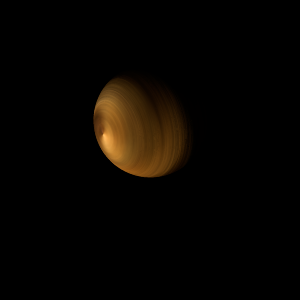|
|
Space Astro
|
Info for exoplanet "Onepe"
| Scientific (actual) data |
|---|
| Name | AU Mic c |
| Planet status | Confirmed |
| Planet mass | 0.0456 |
| Radius | 0.2248 |
| Orbital period | 18.859 |
| Semi major axis | 0.119 |
| Orbit eccentricity | 0.18 |
| Inclination | 89.09 |
| Discovered | 2020 |
| Updated | 2025-05-26 |
| Omega | 72 |
| Tzero tr | 2458330 |
| Lambda angle | 67.8 |
| Impact parameter | 0.26 |
| K | 4.7 |
| Temperature (kelvin) | 436 |
| Publication | Published in a refereed paper |
| Detection type | Primary Transit |
| Mass measurement type | Radial Velocity |
| Radius measurement type | Primary Transit |
| Star name | AU Mic |
| Right ascension | 311.29° |
| Declination | -31.34° |
| Mag v | 8.6 |
| Star distance | 9.79 |
| Star mass | 0.5 |
| Star radius | 0.75 |
| Star sp type | M1V |
| Star age | 0.022 |
| Star temperature | 3700 |
| Wikipedia article | AU Mic c |
Back
| |
| Fictional info (?) |
|---|
| Suggested name | Onepe |
| Planet type | Small gas planet |
| As seen relative to the fixed stars, it rotates on its axis exactly three times for every five revolutions it makes around AU Mic.
It has the densest atmosphere of the three small gas planets, consisting mostly of ethane.
Its north and south poles, therefore, lie where most other planets have their equators. |
| Atmosphere | Ethane | 45% |
| Hydrogen peroxide | 43% |
| Oxygen | 8.7% |
| Ozone | 1.8% |
| Atmospheric pressure | 0.005 bar |
 |
| No known satellites |
| Google search for Onepe |
|
Website by Joachim Michaelis
|
|
|
|